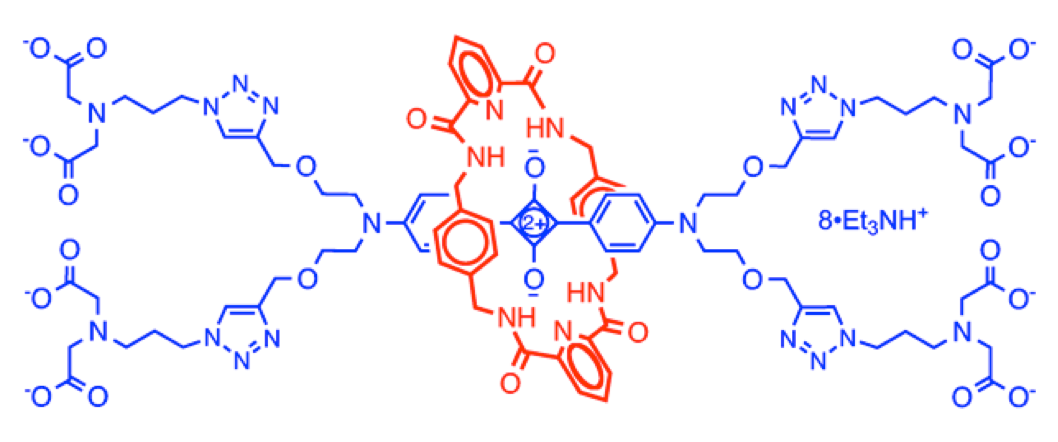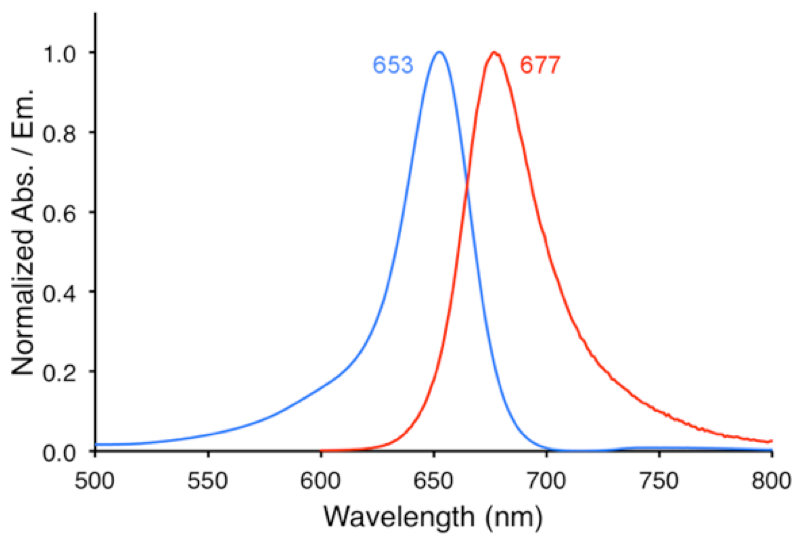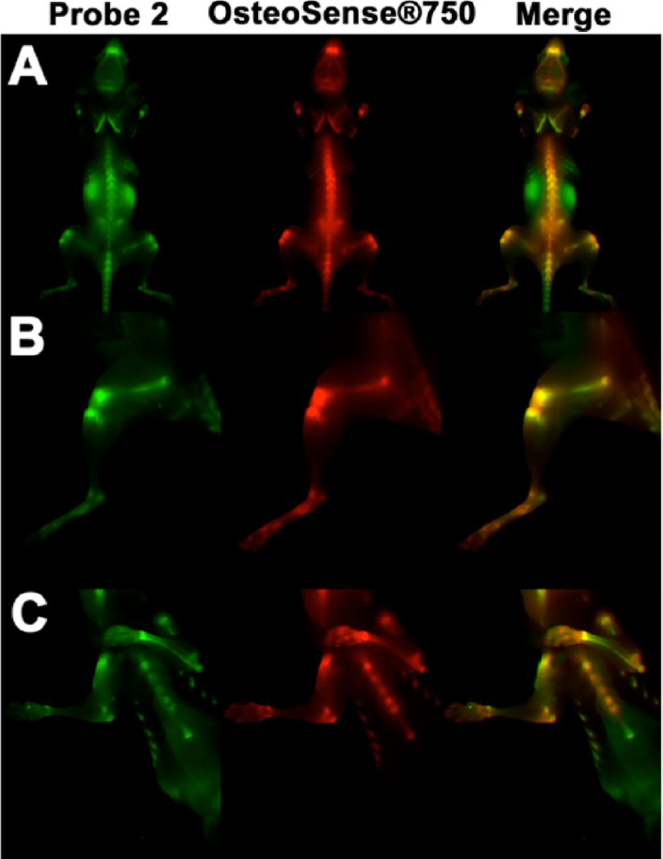Deep-red fluorescent bone seeking probe
본문
OsteoVue 653, deep-red fluorescent bone seeking probe
OsteoVue 653 is a deep-red fluorescent bone seeking probe that has a dendritic molecular architecture with a squaraine
rotaxane core scaffold and four peripheral iminodiacetate groups, which serve as the bone targeting units. OsteoVue 653
images areas of high bone turn over similarly to near infrared bisphosphonate probes [1] and may also image areas of
microcalcifications. It does not stain decalcified bone, which is strong evidence that the bone targeting is primarily due to
the Ca2+ chelation ability of the compound. Product contains 40 nmoles of OsteoVue 653 (2 x 20 nmole vials).

Fig. 1. Squaraine rotaxane based structure of OsteoVue 653.

Fig. 2. OsteoVue 653 abs (---), em (---) in water. Abs max=653 nm; Em max=677 nm. Log ε =5.15 and φ = 0.13

Fig. 3. Representative dorsal (A), leg (B), and chest (C) in vivo fluorescence images of skinless mice that have been treated
with probe 2 (OsteoVue 653) (4 nmol) via an intraperitoneal injection and OsteoSense750 (2 nmol) via a retro-orbital
injection. The images were acquired immediately after euthanization at 24 h pi of the probes and show fluorescence from
probe 2 (ex: 630/10 nm, em: 700/20 nm), fluorescence from OsteoSense750 (ex: 730/10 nm, em: 790/20 nm), and a
merged image (N = 3).
Applications
Useful for preclinical in vivo studies of bone growth or bone remodeling using optical imaging or in vivo fluorescence
guided surgery techniques. May enable in vivo detection of, measurement and monitoring of skeletal changes in a wide
variety of disease states, including arthritis, osteoporosis and cancer metastases. Useful for various in vitro bone binding
assays using microscopic or microarray detection systems.
Significant Advantages
(a) OsteoVue 653 provides a more stable signal in living mice over a 19 day period compared with OsteoSense750.
(b) Its intense narrow emission band allows OsteoVue 653 to be used in multiplex imaging protocols that employ several
fluorescent probes when imaging bone growth.
(c) It is compatible with imaging systems equipped with standard Cy5 filter sets.
(d) Bisphosphonate probes like OsteoSense 750 can induce apoptosis in osteoclasts [2-4] whereas OsteoVue 653 does not
[5].
References
[1] Harmatys, KM, Cole, EL, Smith, BD (2013). In Vivo Imaging of Bone Using a Deep-Red Fluorescent Molecular Probe
Bearing Multiple Iminodiacetate Groups. Mol. Pharmaceutics, 10: 4263-4271.
[2] Russell RGG (2011). Bisphosphonates: the first 40 years. Bone, 49, 2-19
[3] Baron R, Ferrari S, Russell RGG (2011) Denosumab and bisphosphonates: different mechanisms of action and effects.
Bone, 48, 677-92.
[4] Stern PH (2007). Antiresorptive agents and osteoclast apoptosis. J. Cell Biochem., 101, 1087-1096.
[5] Personal communication, Professor Bradley D Smith, University of Notre Dame.
Ordering information
|
Catalog No. |
Product Name |
Size |
|
OsteoVue 653 |
2 x 20 nmole vials |
▣ 관련 페이지 ; MTTI
댓글목록
등록된 댓글이 없습니다.